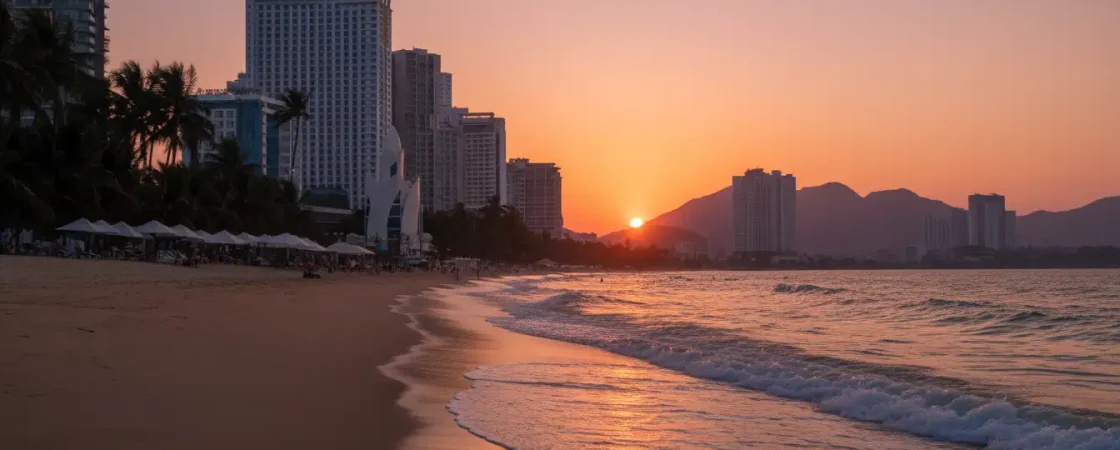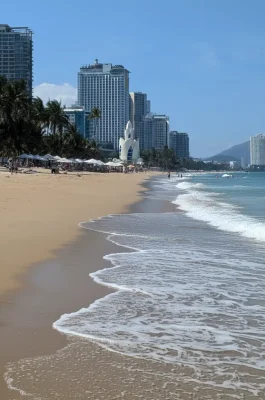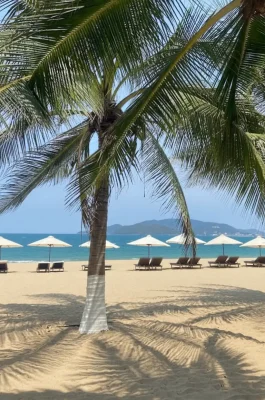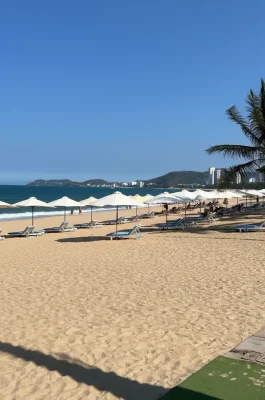Nha Trang Beach stands as the definitive icon of the coastal city and one of Vietnam’s most popular resort destinations. Often called Trần Phú Beach because it runs parallel to the main boulevard, the beach provides a perfect blend of natural beauty and modern convenience. Its gentle crescent shape along the bay, featuring soft white to golden sand and clear turquoise waters, makes it highly accessible and immensely popular with both locals and international tourists.
Introducing Nha Trang's Coastal Vibe
The area buzzes with activity from sunrise to late evening. Early risers witness locals exercising, practicing Tai Chi, or enjoying a morning swim in the calm water. As the day progresses, the beach transforms into a hub for relaxation and water adventure. The adjacent promenade is perfect for leisurely strolls, offering shaded areas beneath swaying palm trees.
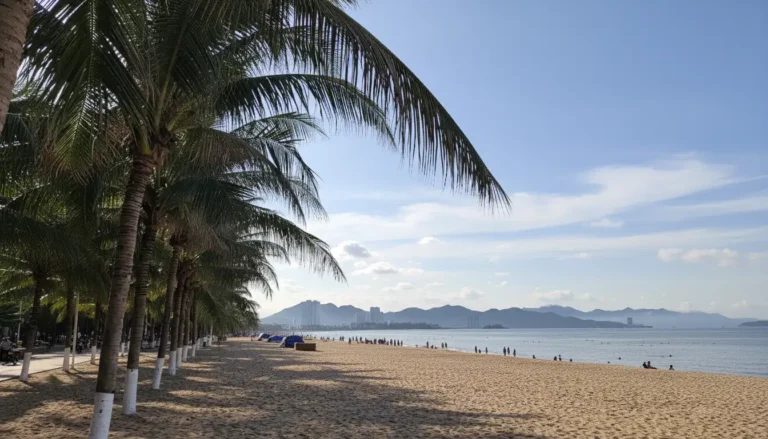
Activities for Every Visitor
Nha Trang Beach directly facilitates a wide array of activities:
Water Sports Thrills: Adrenaline junkies find excitement in activities like parasailing, jet skiing, and banana boat rides. Boats frequently depart from the area, transporting guests to nearby islands like Hòn Mun (Mun Island), famous for Vietnam’s first marine protected area and some of Southeast Asia’s best coral reefs for snorkeling and scuba diving.
Relaxation: Visitors easily rent sun loungers and umbrellas to enjoy the sun. The city maintains the beach and water quality well, ensuring safe swimming conditions for everyone, except during the stormy season from October to December.
Evening Entertainment: The area truly comes alive at night. Numerous beachfront clubs and bars, such as the popular Sailing Club, offer music, food, and a vibrant atmosphere that stretches late into the night.
History, Culture, and Nearby Landmarks
Nha Trang’s history is surprisingly rich, even as a modern resort city. Its name likely derives from the Cham language, possibly a variation of Yuja Trãn (Lau River) due to the presence of mop plants along the nearby Cái River. The area’s importance stretches back to the ancient Cham Kingdom.
Cultural Icons: Travelers should explore the ancient Po Nagar Cham Towers (Tháp Bà Po Nagar) located just north of the city center. These 8th- to 13th-century towers showcase incredible Cham architecture and Hindu spiritual heritage. Another key site is the Long Son Pagoda (Chùa Long Sơn), known for its giant white Buddha statue overlooking the city.
French Influence: The French colonialists once referred to Nha Trang as the “Nice of the East,” recognizing its excellent climate and beautiful coastline, which spurred its early development as a resort town.
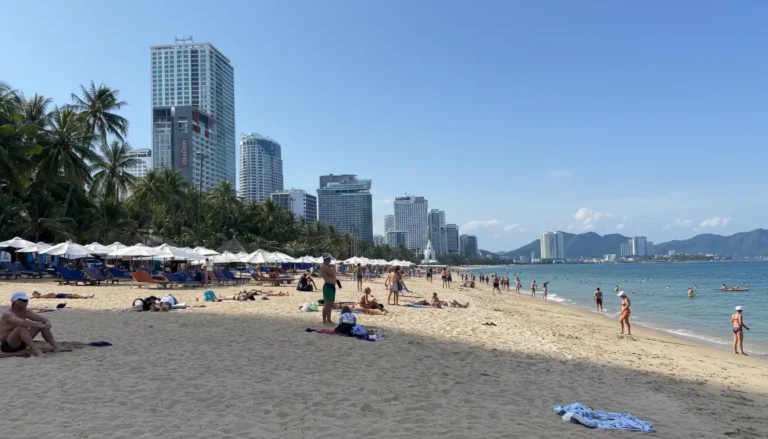
Essential Visitor Information
Accessing Nha Trang Beach is straightforward, as it lies central to the city’s accommodations and services.
| Service | Detail | Note |
|---|---|---|
| Entrance Fee | Free | The main public beach is free to access. |
| Chair/Umbrella Rental | Approx. 50,000 – 100,000 VNĐ | Fees apply for renting equipment from vendors. |
| Opening Hours | Open 24/7 | Best for activities from early morning until sunset. Night use is generally limited to the promenade and beachfront establishments. |
| Contact/Information | No single public number | Local hotels and tour operators provide all necessary information and service bookings. |
| Public Facilities | Available along the promenade | Some sections offer restrooms and public shower facilities. |
The best time to visit is typically the dry season, from January to August, when the weather is sunny and the seas are calmest.
